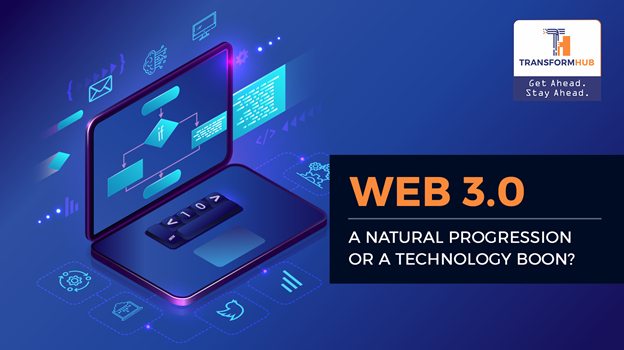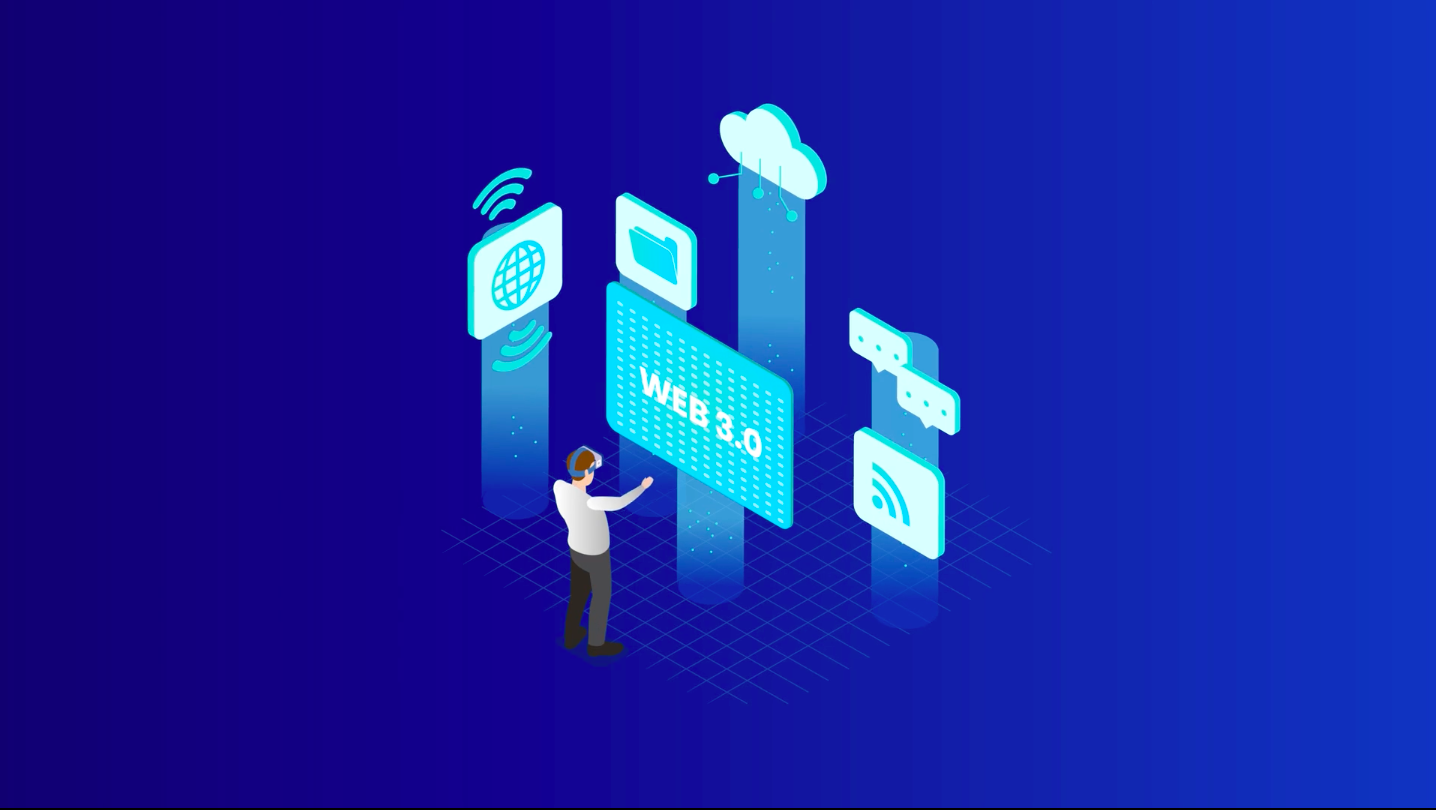What is The Impact of Web3.0 on the Fintech Industry
Over time, the global FinTech evolution wave underwent a significant transformation to become a scorching opportunity on Wall Street and in Silicon Valley. The potential of FinTech has grown from version 1.0 to version 3.0, forcing existing banking institutions and financial service providers to take a radical new direction that ushers in a new era of the digital world. Web 3.0, fueled by technologies like artificial intelligence and machine learning and prompted by the huge changes to the World Wide Web, reshaped the financial services industry and operating model generally and decentralized it.
The transformation of the banking sector from paper and branch banks to digitized and networked banking services has already been made possible by the integration of high-speed internet networks with financial services. The delivery systems that banks use to communicate with their clients are currently being fundamentally revitalized as a result of the changes it has made to the internal accounting and management systems of banks. The delivery of financial services is becoming more comfortable and efficient thanks to technological advancements, yet the fintech sector has not fully jumped on the Web 3.0 bandwagon.
Artificial intelligence is now processing data and developing algorithms to improve trading rules and judgments, moving beyond simple data matching and testing. Machine learning, a sort of artificial intelligence that gives computers the capacity to learn without being explicitly taught, is now being used by up-and-coming fintech firms. Businesses like Affirm, Lending Club, Kabbage, Zest Finance, Bloomberg, Binatex, Dataminr, and FinGenius are using the power of the intelligent web to disrupt financial services in a variety of markets, including lending, wealth management, insurance, payments, bill-reminder services, and fraud detection.
The synergy of the FinTech world and Web 3.0
The first two waves accelerated the development of FinTech 3.0 and expanded the use of machine learning (ML) and artificial intelligence (AI), allowing for the flourishing of intelligent and autonomous processes. The emergence of the Web was essential in the development and advancement of the new wave of innovation, which was fueled by several secular influences. By democratizing access to information, Web 1.0, the initial phase of the development of the World Wide Web, allowed people to exchange information internationally in a static manner. Following the collapse of the dot-com boom, Web 2.0 revolutionized the digital age and emphasized social networking, user-generated content, and cloud computing, giving rise to social networks like LinkedIn, Facebook, Twitter, Instagram, and many more.
Last but not least, Web 3.0, commonly referred to as the decentralized web, is a hypothetical future in which computers and technology would provide pertinent and valuable insights through the intelligent interpretation of data and transactions. The cornerstone of how companies are delivering goods and services to the next generation of unicorns must be built on the Web 3.0 revolution, which is required by the new cashless and virtual economy in FinTech 3.0.
Additionally, Web3 is more intelligent and linked, allowing it to comprehend a user's context in a variety of ways. Intelligent agents and user experience work together to allow both large and small fintech organizations to offer individualized financial services with fewer human interactions.
Benefits of Web 3.0 for the FinTech world
The third generation of internet services will transform how people, companies, and regulatory bodies intend to cooperate, enabling a more connected and smarter world for the financial services sector. The following are the main advantages of the convergence between Web 3.0 and our new decentralized operating model:
- TRUSTWORTHINESS
Users will benefit from an easier and more user-friendly onboarding experience using Web 3.0. Web 3.0 will guarantee that end users always have full ownership and control over their online data by employing decentralized networks. By removing the security concerns associated with retaining any data, every single evolution of the Web from this point on will guarantee furthermore reliability for the enterprises.
- ACCESSIBILITY
The ability for users to access information as much as possible from anywhere in the globe is one of Web 3.0's most important advantages. It will enable companies engaged in loan origination and servicing, BNPL (buy now pay later), and other operations to easily access information about the amount of money that is currently accessible in an account or information that verifies a person's identification.
- A BETTER CLIENT JOURNEY
FinTech companies will be better equipped to comprehend the changing demands and expectations of their client's thanks to Web 3.0. Businesses may automate procedures to undertake customer journey mapping and allocate resources more effectively with the help of Web 3.0's list of contributing technologies to better satisfy customer expectations, promote improved engagement, and foster steadfast loyalty.
- MORE QUICK TRANSACTIONS
Real-time, safe, and transparent transactions for FinTech firms throughout the world will be made possible by artificial intelligence, the Internet of Things (IoT), and blockchain technology. With the use of automation and safe peer-to-peer transactions for digital payments, loan origination, and servicing, BNPL, digital lending, etc., enterprises will be able to increase their efficiency.
- CONTINUOUS SERVICE
Due to decentralization, data will be kept on dispersed nodes, which will drastically minimize account suspensions and denial of distributed services in Web 3.0. Additionally, this will assist FinTech companies in lowering the cost of handling server outages or seizures.
What the future holds
We are witnessing a paradigm transition under Web3 from the old financial infrastructure, which is centrally located and governed by several organizations, to a more open and decentralized system. These technologies are only a small portion of what is feasible, even while they are expanding the possibilities for innovation and opening the door to a more inclusive and democratic financial system.
Additionally, even though Web3 is generally quite advantageous for the fintech sector, there are several obstacles and drawbacks to consider. These include:
- It might be difficult for novices to understand.
- Difficult to govern - Some experts also believe that decentralization will make Web3 tracking and regulation difficult. As a result, it is anticipated that cybercrimes will increase.
- Websites built with Web 1.0 will seem dated.
- Web 3.0 cannot run on computers or other devices that are more than five years old. For this reason, you would need a device with much greater specs to utilize the next version of the Internet.
Additionally, if traditional infrastructure becomes less and less relevant, Web3 may end up being the main channel via which the general public interacts with commercial services in the future. This may make e-trade more akin to a larger, more liberal, more inclusive, and more democratic economic system. Today's FinTech sector is developing at such a rapid rate that there is a huge demand for partners in digital lending technologies from businesses all over the world. Next-generation enterprises need a trustworthy partner that is knowledgeable about the current FinTech sector, which is being driven by Web 3.0, to unleash innovation and grow quickly. These kinds of partnerships make it possible to differentiate your company in a highly competitive market!
Click here to find out more about TransformHub's services and products, and we'll be pleased to set up a conversation with you to discuss how we can help your FinTech company realize the full potential of Web 3.0.
Share this
You May Also Like
These Related Stories

Web3.0 - a Natural Progression or a Technology Boon

Top 10 applications of Web 3.0 for business enterprises




